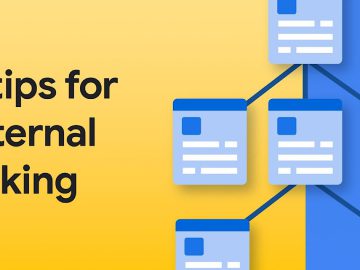Having an online presence is essential—but simply having a website isn’t enough. Brands need to make sure they are visible to their target audience, and achieving this requires a strategic approach. While many businesses debate between focusing on paid search (like Google Ads) or organic SEO (search engine optimization), the truth is that combining both strategies yields the most powerful results.
This article looks at why businesses need to use a mix of paid and organic SEO strategies is essential for boosting online visibility, driving traffic, and maximizing return on investment (ROI).
The Complementary Nature of Paid and Organic SEO
Paid and organic strategies are often seen as separate paths to the same goal: increased traffic. However, they work best when combined. Organic SEO focuses on long-term growth by improving search rankings through keyword optimization, content creation, and technical enhancements. Paid search, on the other hand, provides immediate visibility through targeted ads.
By integrating the two, businesses can enjoy both instant results and sustainable growth:
- Paid search ensures immediate exposure for new campaigns or content.
- Organic SEO builds credibility and authority over time, reducing reliance on paid ads.
This complementary relationship helps businesses capture traffic across multiple touchpoints and search stages.
Enhanced Keyword Data and Insights
One of the most significant benefits of combining paid and organic SEO strategies is the ability to gather comprehensive keyword insights. Paid campaigns allow businesses to test various keywords quickly and gauge their effectiveness based on click-through rates (CTR), conversions, and cost-per-click (CPC).
By analyzing this data, businesses can identify high-performing keywords and integrate them into their organic SEO strategy. Similarly, insights from organic performance—such as which keywords lead to sustained engagement—can inform paid campaigns for more precise targeting. For maximum results, it’s advised that you entrust an expert Google Ads agency to handle this aspect for you.
Example:
If a paid campaign reveals that a certain long-tail keyword generates a high conversion rate, you can prioritize that keyword in your organic content strategy, creating blog posts or landing pages that target it.
Increased SERP Real Estate
Appearing multiple times on a search engine results page (SERP) significantly boosts visibility. Combining paid and organic strategies allows businesses to dominate search results for their target keywords. A paid ad at the top, coupled with an organic listing below, creates a sense of authority and increases the likelihood of users clicking through.
Why This Matters:
- Higher trust and credibility: Users are more likely to trust a brand that appears in both paid and organic listings.
- Improved click-through rates: The combined visibility encourages users to engage with your brand, even if they skip the ad and click the organic link.
Supporting Brand Awareness and Recognition
Paid ads are a powerful tool for building brand awareness, especially for new or lesser-known businesses. Even if users don’t immediately click on an ad, repeated exposure to a brand name through search ads can create familiarity. Organic SEO, on the other hand, reinforces this recognition through valuable, relevant content.
When users encounter your brand multiple times—through ads and organic search—they are more likely to view your business as a trusted authority. This omnichannel presence helps build long-term relationships with potential customers.
Faster Testing and Optimization
One of the challenges of organic SEO is that it takes time to see results. It can take months for a page to rank on the first page of Google, especially in competitive industries. Paid search, however, provides instant feedback, allowing businesses to test strategies quickly.
With paid ads, you can:
- Test different headlines, descriptions, and calls to action (CTAs).
- Experiment with landing pages and conversion paths.
- Gauge user response to various offers or messaging.
These insights can be used to fine-tune your organic SEO strategy, ensuring you focus on tactics that resonate with your audience.
Maximizing ROI with Holistic Campaigns
Focusing solely on either paid or organic search can limit your ability to maximize ROI. Paid search can become expensive if not managed properly, while organic SEO requires a significant time investment. Combining the two allows businesses to balance costs and results, optimizing for both short-term gains and long-term growth.
- Paid search provides immediate traffic, which can be crucial during product launches, promotions, or seasonal campaigns.
- Organic SEO continues to drive traffic and leads even after a campaign ends, creating ongoing value.
Addressing Different Stages of the Buyer’s Journey
Consumers go through different stages when making a purchase decision: awareness, consideration, and decision. Paid and organic strategies address these stages in unique ways.
- Paid search often targets users in the decision stage—those searching for specific products or services.
- Organic content nurtures users in the awareness and consideration stages by providing educational and informative content.
By combining both strategies, businesses can ensure they are visible at every stage of the buyer’s journey, guiding potential customers from discovery to conversion.
Leveraging Retargeting Opportunities
Paid strategies, especially through platforms like Google Ads and Facebook, offer robust retargeting capabilities. Retargeting allows you to reach users who have already interacted with your website but didn’t convert. Organic SEO drives the initial visit, while paid ads re-engage users and encourage them to return.
This combination ensures that no opportunity is wasted and that potential customers are reminded of your brand after their initial visit.
Adapting to Algorithm Changes and Market Shifts
Search engine algorithms are constantly evolving. A strong organic SEO strategy can be impacted by algorithm updates, causing fluctuations in rankings. Paid search provides a buffer against these changes by maintaining visibility regardless of organic performance.
Similarly, shifts in market demand or consumer behavior can be quickly addressed with paid campaigns, while organic strategies catch up over time.
Competitive Advantage
Finally, combining paid and organic SEO strategies gives businesses a competitive edge. Many competitors may focus on one strategy, but those that integrate both can capture more market share and drive consistent results.
Investing in both ensures that your brand is visible across multiple channels, making it harder for competitors to dominate search results.
To Sum Up
To truly boost online visibility and drive sustainable growth, businesses need a hybrid approach that leverages the strengths of both strategies.
Paid search provides immediate results and valuable data, while organic SEO builds authority and long-term value. By combining the two, businesses can enhance their search presence, engage users throughout the buyer’s journey, and maximize ROI. Whether you’re launching a new campaign or looking to scale your online presence, integrating paid and organic SEO strategies is a winning formula for success.




